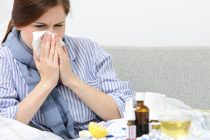It’s not the monsters under the bed that you need to protect your children from, it’s the bacteria that’s lurking around the corner, on the kitchen sides, in the bathroom and just about everywhere. Although you can’t always see the evil monsters it doesn’t mean they don’t exist, so when your son or daughter is afraid of the monsters under the bed, just remember that they are not just hiding there.
The Wives Tales
A classic belief with us all is that the toilet seat is the dirtiest place within the home. But this couldn’t be any further from the truth. Although, there are some bacteria there, on average there are about 200 times more bacteria on the average cutting board proposes DR Chuck Gerba, professor of microbiology at the University of Arizona.
This is not the only old wives tale which we all here and believe. I think we have all heard of the five second rule, or maybe the three. But whichever one you have heard, it is definitely something not to be believed. Professor Paul L Dawson, Clemson University (USA) carried out a study which followed this wives tale and proved that bacteria could affect any food left on a surface no matter how long for. He found that there was no considerable difference in the level of bacteria within the food when left for anytime between two and six seconds.
I Wanted to Shout and Share
But this is not to scare you; we all understand the dangers of bacteria. We all want to keep our kids safe and keep them from harm’s way, but the problem is that maybe we don’t always know how to. We don’t, unfortunately, always know what’s best.
After reading the study, I wanted to share my new knowledge with everyone I knew. I had learnt a lot from what he said; where the problems areas were and what to do in order to keep my kids safe, but I knew that I needed to shout further and let more parents know.

What I Learnt
I discovered that there are four high risk areas within the home; Reservoir sites, Reservoir disseminators, contact surfaces and other surfaces. The Reservoir sites are the wet places like the kitchen sink, Reservoir disseminators are the many items and utensils which are used within the wet areas, for example, cloths and sponges used to clean the kitchen sides or do the washing up. Contact surfaces includes both surfaces which come into reach with your hands or food such as taps and door handles, and the other surfaces are those which are of lower risk unless they have had contact with someone who has been unwell, such as the sick bucket.
How to Clean these Risky Areas
The thing with bacteria is it’s not just about knowing that it exists, but also how to clean it. There are so many wives tales about the best way to clean too, so it is difficult to know what to do for the best. It always seems that there are never enough hours in the day to keep the house clean, especially with young kids around and I know, before, I have just grabbed a cloth quickly to wipe over the kitchen sides thinking it will be enough, we all have, haven’t we? But something which scared me the most about this study was that it’s not enough, and there is nothing worse.
The study offers some key points about how best to keep the bacteria at bay and regular, effective washing of our hands is one of them. We all wash our hands when we need to, when they feel dirty or sticky or after the loo, but it’s just not enough. It is definitely the little things that we don’t realise that can have a huge effect.
After reading the ways in which to best clean the high risk areas, I also got some advice from some local Cambridge cleaning companies including KomPear Cleaning, near where I live. I wanted to make sure I was protecting the kids as best as I could and this way I got some hands on advice from the professionals and a list of things I could do myself and pass on to others.
The best pieces of advice I gained include:
- Making sure that we clean areas such as kitchen sides, sinks and chopping boards with clean equipment. This means that we need to clean each cloth or sponge after every use and ideally as hygienically as possible but either washing them at 60 degrees or boiling them in disinfectant. We also need to dry these as quickly as possible as the bacteria like damp cloths the most.
- Surfaces need to be cleaned not only with clean equipment but with a disinfectant spray before and after food preparation or any other activity like nappy changing on a baby changing table.
- Equipment used to prepare food should also be cleaned thoroughly with hot water and detergent, paying extra care to the handles as these can sometimes be forgotten, and so can the tap handles too.
- Surfaces such as coffee tables and window seals which can be seen as low risk need to be regularly cleaned but not daily, and the best cleaning method for this is disinfectants or polish depending on the surface and type of dirt.
One thing I have definitely learnt from finding this report and getting all the advice I have is to not be scared. Bacteria will always be there but what we can do is reduce it and the effects it has on our body. After all, no one enjoys being ill.




